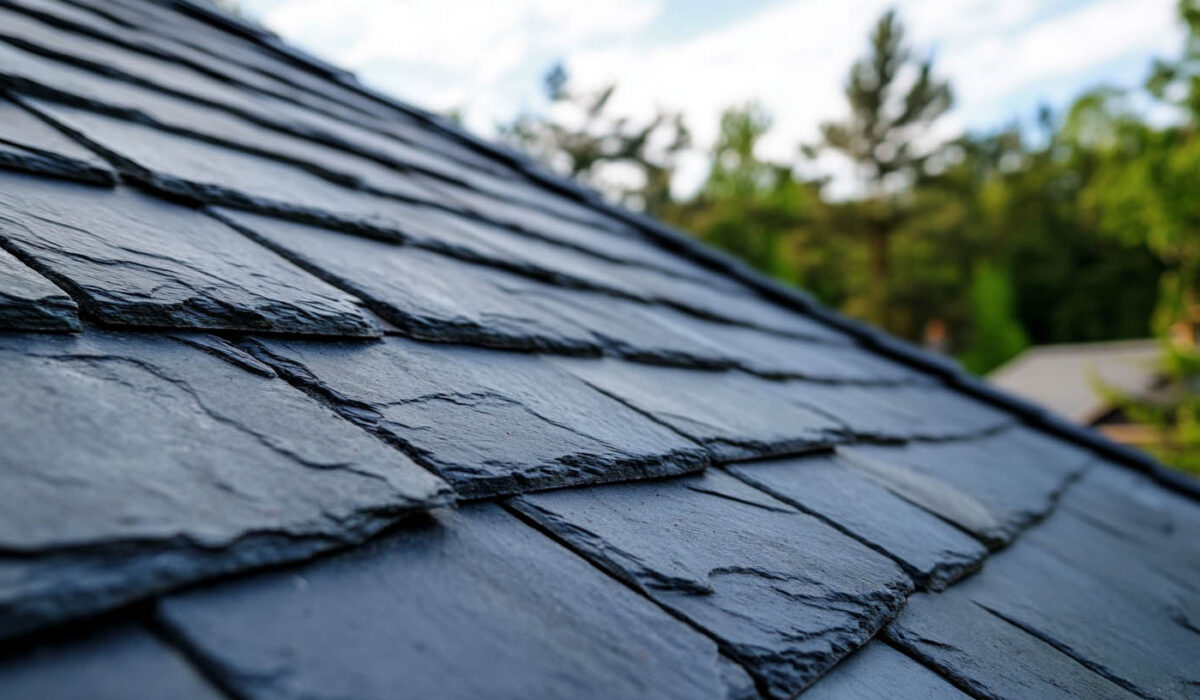Choosing the right roofing material is essential to ensure long-term durability, energy efficiency, and aesthetic appeal. Among the most popular options are slate and concrete roof tiles, each offering unique features that cater to different needs. This detailed comparison will help you understand the advantages and drawbacks of both materials, making it easier to select the best option for your residential or commercial project.
Slate Roof Tiles
Overview
Slate is a natural metamorphic rock formed under intense heat and pressure. It has been used as a roofing material for centuries, particularly in historic structures and architectural landmarks.
Benefits
- Durability: When properly installed, slate provides a watertight roofing system that can last for the lifespan of the structure with minimal maintenance.
- Energy Efficiency: The density of slate helps regulate indoor temperatures, reducing energy costs.
- Fire Resistance: Slate is a noncombustible material, offering added protection against fire hazards.
- Environmentally Friendly: Made from natural and recyclable materials, slate does not emit toxic substances.
Drawbacks
- Weight: Slate tiles weigh between 800 and 1,500 pounds per 100 square feet, requiring structural reinforcement for most buildings.
- High Cost: Slate is among the most expensive roofing materials, making it inaccessible for many homeowners.
- Alternative Options: Synthetic slate, though lightweight and affordable, lacks the proven durability of natural slate.
Unique Fact: Slate roofs have been known to last over 100 years, with some historic buildings still retaining their original roofing.
Concrete Roof Tiles
Overview
Concrete roof tiles are made from a mixture of cement, sand, water, and oxide pigments. Widely used for thousands of years, they are a trusted roofing material for homes and commercial buildings worldwide.
Benefits
- Weather Resistance: Concrete tiles can withstand extreme weather conditions, including heavy rain, wind, and freeze-thaw cycles.
- Energy Efficiency: The design and installation of concrete tiles allow air circulation beneath the tiles, reducing heat transfer into the attic and lowering energy costs.
- Design Versatility: Available in various colors, profiles, and finishes, concrete tiles can emulate wood shakes, slate, or other materials.
- Cost-Effective: Concrete tiles are more affordable than slate and offer excellent value for money.
- Sustainability: Many concrete tiles meet cool roof standards and are available in reflective colors for improved energy efficiency.
Drawbacks
- Weight: While lighter than slate, concrete tiles still require structural inspection before installation.
- Algae Growth: In certain climates, algae may form on concrete tiles, necessitating periodic cleaning for aesthetic upkeep.
Unique Fact: Concrete tiles are manufactured in a variety of shapes, from flat to curved, and can replicate the appearance of traditional slate or even wood shakes. This adaptability makes concrete tiles suitable for a wide range of architectural styles, from modern to rustic.
Key Comparisons
| Feature | Slate Roof Tiles | Concrete Roof Tiles |
| Durability | Over 100 years with minimal maintenance | 50–75 years with proper care |
| Weight | 800–1,500 lbs per 100 sq. ft. | 600–900 lbs per 100 sq. ft. |
| Cost | High (premium material) | Moderate (affordable alternative) |
| Design Options | Limited to natural textures and colors | Wide range of colors and profiles |
| Environmental Impact | Natural and recyclable | Sustainable with reflective options |
Why Choose Tile Roofing San Diego?
Tile Roofing San Diego, located in San Diego, CA, specializes in high-quality concrete roof tile installations. As an Owens Corning Preferred Contractor and GAF Master Elite Contractor, the company delivers expert craftsmanship, innovative solutions, and industry-leading warranties. Our ability to replicate the appearance of premium materials like slate makes them an excellent choice for both budget-friendly and high-end roofing projects.
Frequently Asked Questions
1. Is slate more durable than concrete roof tiles?
Slate has a longer lifespan, often exceeding 100 years, while concrete tiles last 50–75 years with proper maintenance.
2. Can concrete tiles mimic the appearance of slate?
Yes, many concrete tiles are designed to replicate the look of slate at a lower cost.
3. Do slate and concrete roofs require structural reinforcement?
Both materials are heavy, so structural inspection and potential reinforcement are recommended before installation.
4. Which material is more affordable?
Concrete tiles are significantly more cost-effective than natural slate.
5. Are both materials environmentally friendly?
Yes, slate is natural and recyclable, while concrete tiles are sustainable and often meet cool roof standards.
Conclusion
Both slate and concrete roof tiles offer exceptional benefits, but their suitability depends on your budget, aesthetic preferences, and structural requirements. Slate provides unmatched longevity and natural elegance, while concrete tiles deliver versatility and affordability. For tailored roofing solutions, trust experts like Tile Roofing San Diego to help you make the best choice for your project.To understand the importance of ordering concrete tile samples, click here.

